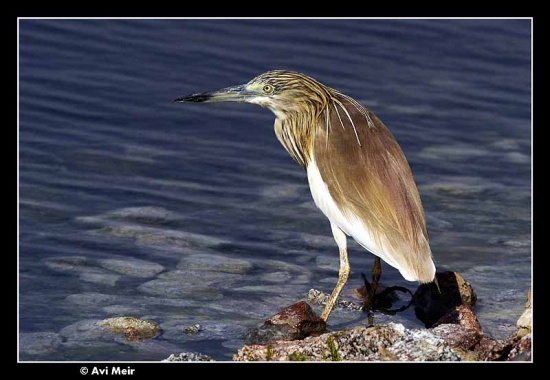| Line 3: | Line 3: | ||
==Identification== | ==Identification== | ||
| + | 40-49cm. Short neck, short thick bill and buff-brown back. In summer, adults have long neck feathers. In flight, it appears very white due to the colour of the wings. | ||
| + | |||
==Distribution== | ==Distribution== | ||
| − | Breeding range very patchy across southern Europe from Iberia to the Balkans and Ukraine. Also in parts of Turkey, the Middle East, Morocco and Egypt and east to Turkmenistan and Afghanistan. In decline in many areas through the drainage of wetlands but the first breeding for Sardinia was recorded in 1985 and the Balearics in 1997. Has a wide but scattered distribution in sub-Saharan Africa from Senegal to Sudan and Somalia and south to the Cape. | + | Breeding range very patchy across southern [[Europe]] from [[Iberia]] to the [[Balkans]] and [[Ukraine]]. Also in parts of [[Turkey]], the [[Middle East]], [[Morocco]] and [[Egypt]] and east to [[Turkmenistan]] and [[Afghanistan]]. In decline in many areas through the drainage of wetlands but the first breeding for [[Sardinia]] was recorded in 1985 and the [[Balearics]] in 1997. Has a wide but scattered distribution in sub-Saharan [[Africa]] from [[Senegal]] to [[Sudan]] and [[Somalia]] and south to the [[Cape]]. |
==Taxonomy== | ==Taxonomy== | ||
This is a monotypic species. | This is a monotypic species. | ||
| Line 10: | Line 12: | ||
Freshwater swamps, ponds and ditches, often with very small areas of water, also larger waterbodies with dense vegetation, especially reedbeds with scattered willows. | Freshwater swamps, ponds and ditches, often with very small areas of water, also larger waterbodies with dense vegetation, especially reedbeds with scattered willows. | ||
==Behaviour== | ==Behaviour== | ||
| + | They nest in small colonies, usually on platforms of sticks in trees or shrubs. 3-4 eggs are laid. | ||
| + | |||
| + | The diet includes insects, fish and amphibians. | ||
| + | |||
| + | |||
==Bird Song== | ==Bird Song== | ||
<flashmp3>Ardeola ralloides (song).mp3</flashmp3><br /> | <flashmp3>Ardeola ralloides (song).mp3</flashmp3><br /> | ||
| Line 15: | Line 22: | ||
==External Links== | ==External Links== | ||
{{GSearch|Ardeola+ralloides}} | {{GSearch|Ardeola+ralloides}} | ||
| − | [[Category:Birds]][[Category:Ardeola | + | [[Category:Birds]][[Category:Ardeola]] |
Revision as of 17:29, 17 June 2008
- Ardeola ralloides
Identification
40-49cm. Short neck, short thick bill and buff-brown back. In summer, adults have long neck feathers. In flight, it appears very white due to the colour of the wings.
Distribution
Breeding range very patchy across southern Europe from Iberia to the Balkans and Ukraine. Also in parts of Turkey, the Middle East, Morocco and Egypt and east to Turkmenistan and Afghanistan. In decline in many areas through the drainage of wetlands but the first breeding for Sardinia was recorded in 1985 and the Balearics in 1997. Has a wide but scattered distribution in sub-Saharan Africa from Senegal to Sudan and Somalia and south to the Cape.
Taxonomy
This is a monotypic species.
Habitat
Freshwater swamps, ponds and ditches, often with very small areas of water, also larger waterbodies with dense vegetation, especially reedbeds with scattered willows.
Behaviour
They nest in small colonies, usually on platforms of sticks in trees or shrubs. 3-4 eggs are laid.
The diet includes insects, fish and amphibians.
Bird Song
<flashmp3>Ardeola ralloides (song).mp3</flashmp3>
Listen in an external program




